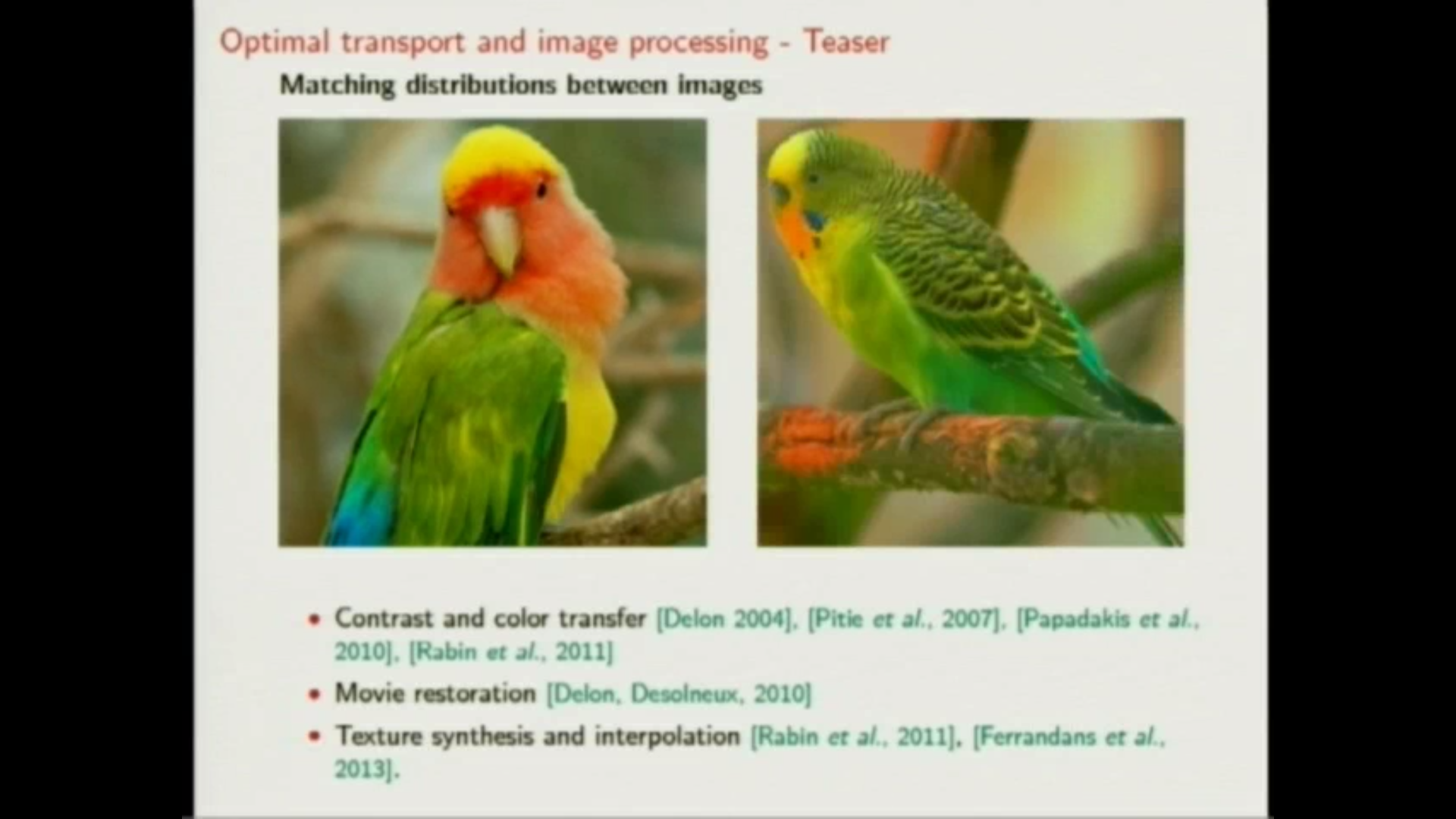Applications of optimal transportation and Wasserstein barycenters in computer vision, image and video processing
Presenter
August 22, 2013
Keywords:
- Monge mass transport
- Monge-Ampere equation
- optimal transport
- non-linear PDE
- applied mathematics
- computational modelling
- image analysis
- image computation
- computer vision
MSC:
- 34B10
- 32W20
- 82C70
- 37-xx
- 37Fxx
- 37Gxx
- 62M40
- 62M30
- 62Mxx
- 65D18
Abstract
The purpose of this talk is to present an overview of the applications of optimal transport in computer vision, image and video processing. The use of optimal transportation in these fields has been popularized twelve years ago by Rubner et al. for image retrieval and texture classification, with the introduction of the so-called Earth Mover's Distance (EMD). Nowadays, Monge-Kantorovich distances are used for applications as various as object recognition and image registration. The other interesting aspect of this theory lies in the transportation map itself and the possibility to define barycenters between multiple distributions. These notions permit many image and video modifications, such as contrast and color transfer, or texture mixing, to name just a few. However, optimal transport suffers from two important flaws for such applications. First, discrete optimal transport maps are generally irregular and tend to produce artifacts in images. The second drawback is that optimal transport generally leads to computationally expensive solutions, which make it impracticable in many real applications. We will see how these problems can be handled in practice, by introducing well chosen regularization and approximations.
